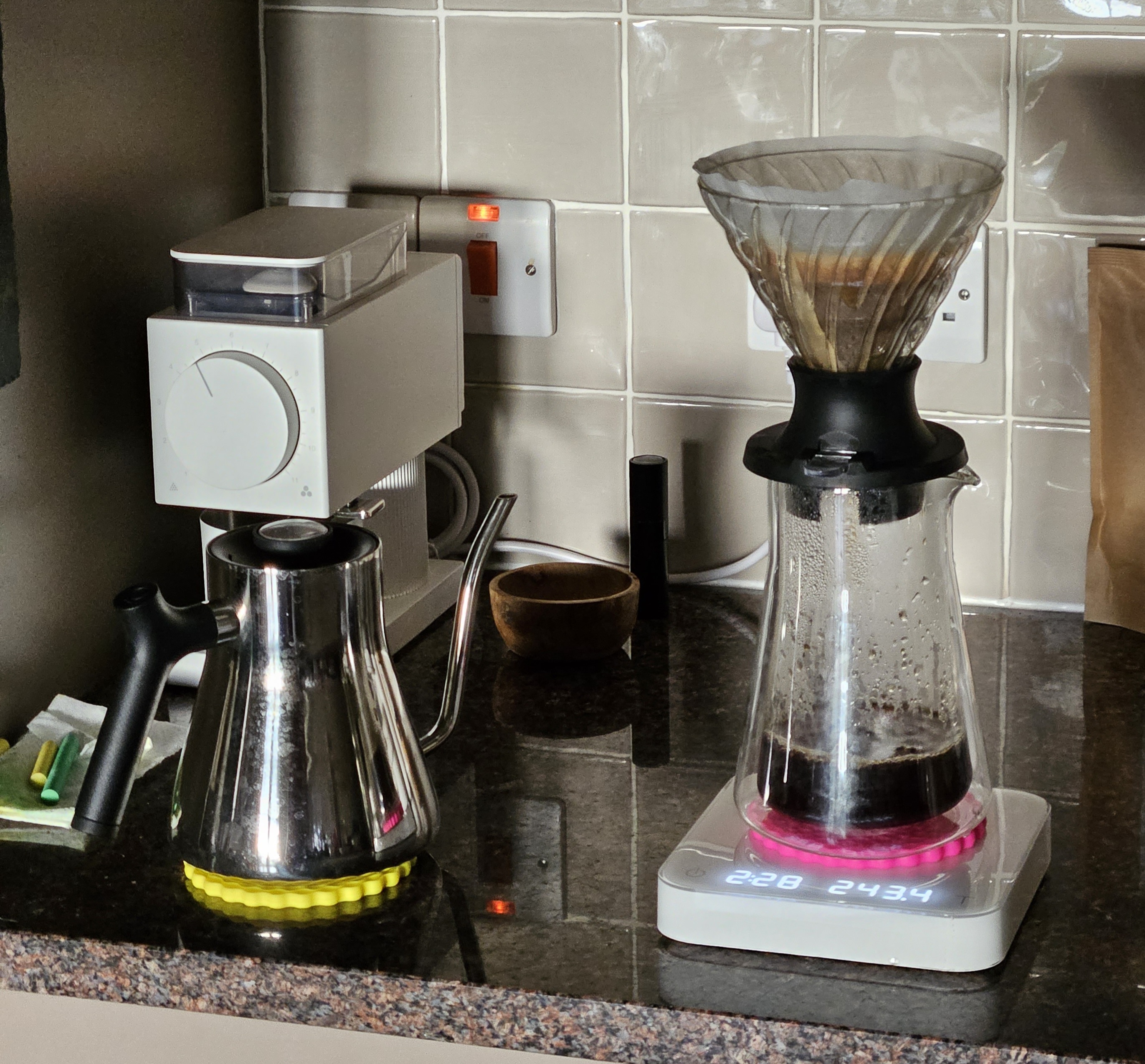Yeah they’ve left the dipper in it too.
Hannah
Fortysomething trans woman (she/her) living in the middle of nowhere with husband, cats and puppy. Interested in esports, film photography, music, cooking, nature, and witchy things. Not on social media.
- 3 Posts
- 12 Comments
I know you don’t want to spend too much but there’s also no point buying something that misses the mark in terms of the grind you need for the espresso you want. When I was looking at grinders for espresso I narrowed it down to the 1zspresso J-Max for a hand grinder or the Baratza Encore ESP for a machine grinder. Both are a bit more expensive than the basic options but give much more versatility for dialing in grinds.
I was going to write a bunch of things about the Switch but I guess they would apply to most other pourover drippers too. I’m coming from the Chemex as a comparison, which is lovely but a bit slow and unwieldy for that one cup of coffee.
Having said that what makes the Switch stand out to me is that it feels like such a high quality piece of kit, and having the immersion element in the mix really suits me. My brain interprets that as “big aeropress” for whatever reason.
Here is a better angle as requested:

Yes that’s basically why I got my Switch and its mostly the way I use it: percolate for the bloom then immerse for the brew. Although I’m going to play around with that soon.
I can only compare it to the Chemex, which is a bit of a different beast. I find that I can get a great balance of extraction and flavour out of the brew because I can immerse. For my work coffee I have settled into a medium grind of 18g coffee + 54g water, gentle pour for bloom, followed by a full pour (to 300g) at 30 seconds with the switch up so that the brew immerses, then switch down at 2 minutes to let the brew drain through the settled grounds. Then I vary the grind to sort any extraction issues with the particular beans I have.
I’m not sure if glass v plastic will make a difference like the ceramic does. I prewash my filters with boiling water which will heat up the Switch but I’m not sure how effective that will be.
PS: I changed the title of this post to be super specific because “Hario Switch” might have gotten some unintentional crossover from the Gaming community 😁
Spending the money on the grinder first is such a wise choice - followed obviously by spending the money on the beans themselves - and you can’t go wrong with an aeropress. It’s also ridiculously portable, especially if you measure out your beans beforehand into little single dose containers…
I make my cold brew in a plastic and glass contraption that produces a drip onto a reservoir into a bed of grounds that has a metal filter on the bottom. I can’t say I have ever noticed a metallic taste to the coffee. I put an aeropress filter on top of the grounds to help the moisture distribute. I suppose you could do the same at the bottom to avoid direct contact between the grounds and the metal in the filter, if it was a concern that some kind of reaction might take place (that wouldn’t otherwise take place in the presence of ~0C water + dissolvables).
I’m in love with Tetsu Kasuya’s “god recipe” using a Hario Switch:
. 18g coffee ground fairly fine
. 300g water
. Start with Hario Switch open
. 0s - pre-pour to 60g
. 30s - 2nd pre-pour to 120g
. 1m 15s - CLOSE HARIO SWITCH pour to 300g and let the brew immerse
. 2m - OPEN HARIO SWITCH and let drain
. 3m or so - if grind is correct drain should complete
Swirl / stir and serve.
(Note: Kasuya says 20g but 18g gives you 60g per litre - obvs vary to taste / grind / beans)


I use the Hario Switch almost exclusively for pourovers. It’s glass plus you can throw in immersions with it. Bit spendy compared to the plastic cones though.